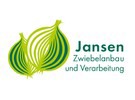This year's field conditions in the Lower Rhine onion-growing area were extremely difficult. "Due to the heavy rainfall in spring, we have lost around 10 percent of our acreage. I have never personally experienced conditions like this since 1991. In other recognized growing areas, such as the Palatinate, the crops have also suffered greatly, which has led to a high proportion of small-falling goods, increased disease pressure and, ultimately, more problematic batches. On our farm in particular, the quality so far have been rather average, and we have already been punished hard enough by the losses right at the beginning of the season," said Hermann-Josef Jansen, managing director of the company of the same name in Brüggen, during an on-site interview.
This year, there was an almost seamless seasonal transition from the old-crop onions in storage to the first winter onions at the end of June, Jansen continued. "At that time, prices were still relatively firm and high. At the beginning of the main harvest, the pressure on the market increased, although the onion market calmed down somewhat after storage. There are no large quantities entering the market at the moment, but that doesn't mean that the quantities are not in storage. On the contrary: the area under onion cultivation has steadily increased in recent years, mainly due to the growing number of onion growers. This, in turn, is linked to the increased demand for exports, particularly in the Netherlands. We also export some peeled goods to the Netherlands, and our location in the immediate vicinity of the border is of course an advantage."
Insight into onion processing.
This year, sowing was extremely late. Jansen: "We normally start on a large scale at the end of March. This year, we only really got started in mid-April and the last onions were not even planted until May. This ultimately meant that some areas did not produce any quality onions at all, in addition to the 10 percent losses mentioned above. As a result, the main harvest also got off to a relatively late start this year, with some crops not ripening until mid-October."
Onion products of all kinds
Hermann-Josef Jansen started out growing onions on just one hectare of land in the early 1990s. "However, marketing was difficult at the beginning. Then the opportunity arose to take over a company with integrated onion processing in Erkelenz, along with its customer base. So we got off to a relatively quick start. Since then, we have always adapted our cultivation capacities to the growing demand. At the moment, we supply a broad customer base, from small catering businesses to large salad or canning factories. However, the product requirements are relatively similar across all segments: customers want a product that has the longest possible shelf life, is hygienically flawless and risk-free. Today, we offer our onion products almost exclusively in 10-kg bags and 20-kg boxes. In addition to unpeeled and peeled onions, we mainly focus on the production and marketing of onion cubes in a wide variety."
Hermann-Josef and Philipp Jansen in the red onion warehouse.
Increased demand for peeled red onions
The Jansen company is primarily dedicated to the production and processing of the yellow onion, although the red onion is also growing in popularity. "The red onion has always been a niche product, but in recent years there has been an increasing demand for it from industry, which is why we have gradually expanded our acreage. We also see further growth potential in the area of red, peeled onions. However, the crop itself is not for everyone: growing, storing and processing it is much more complicated than with yellow onions."
'Increased problem batches are destroying the price structure'
It is not inflation, but rather the quantities and qualities available that determine prices on the onion market, Jansen also observes. "Due to the aforementioned expansion of acreage, there is more volume available, but in many cases the qualities are lacking to demand correspondingly high prices. In my opinion, the big challenge for the future will also be to place the poor quality onions grown by newcomers on the market. In the current season, it is already becoming apparent that the many problem batches that are available are disrupting the price structure. With potatoes, for example, the poorer quality goods are always used, whether as flakes, animal feed or biogas. For onions, on the other hand, there is currently no second-choice market, which is why these goods often cannot be sold."
Philipp Jansen shows freshly planted winter onions.
For more information:
Hermann-Josef & Philipp Jansen
Zwiebel Jansen GmbH
Haverslohe 31
41379 Brüggen
Tel: 02163 / 50 67
Fax: 02163 / 63 88
e-mail: [email protected]
www.zwiebel-jansen.de
